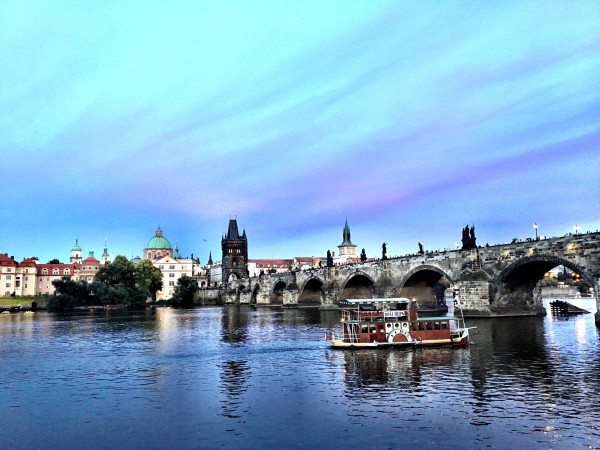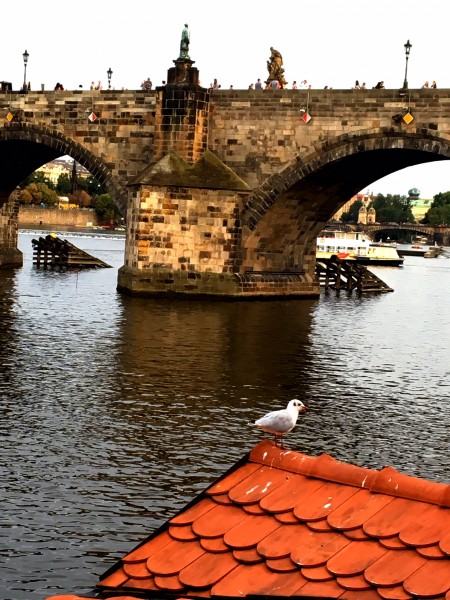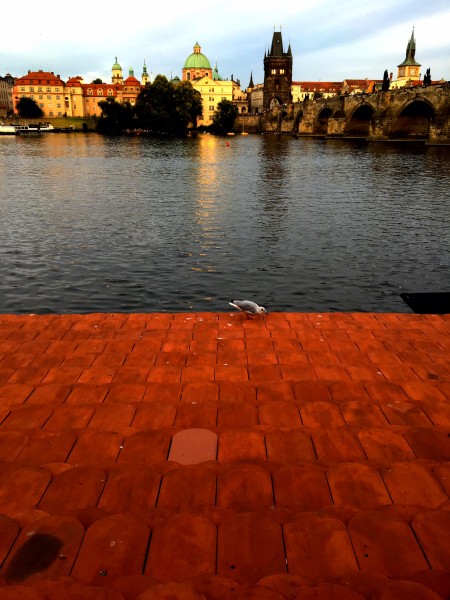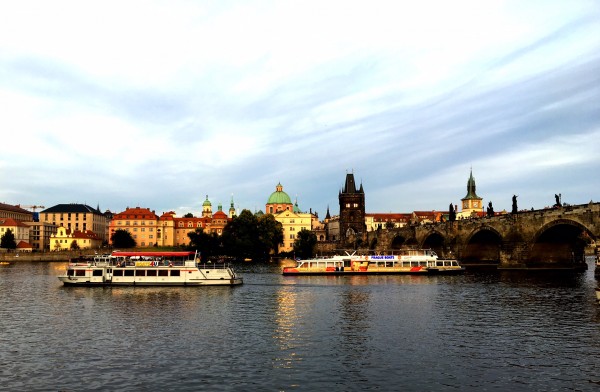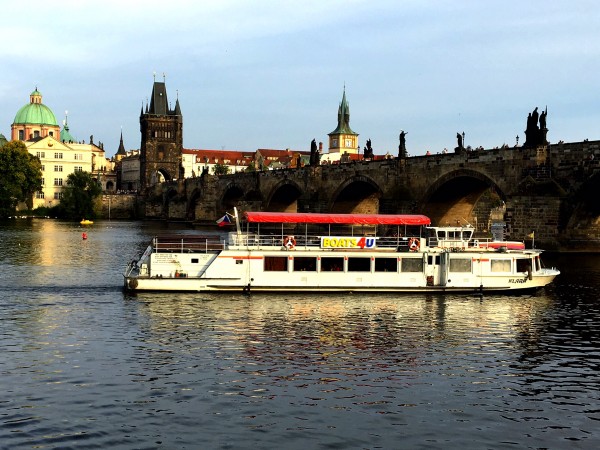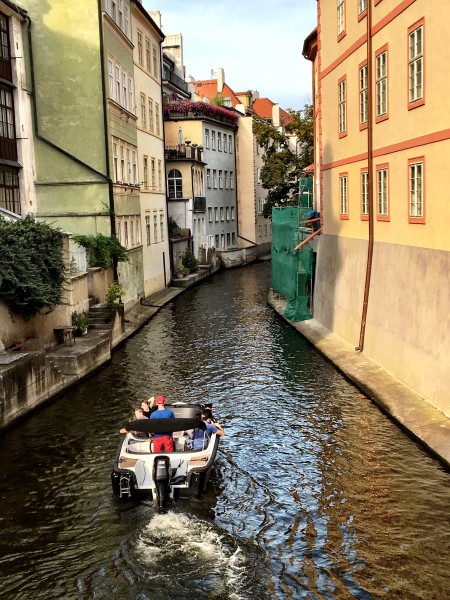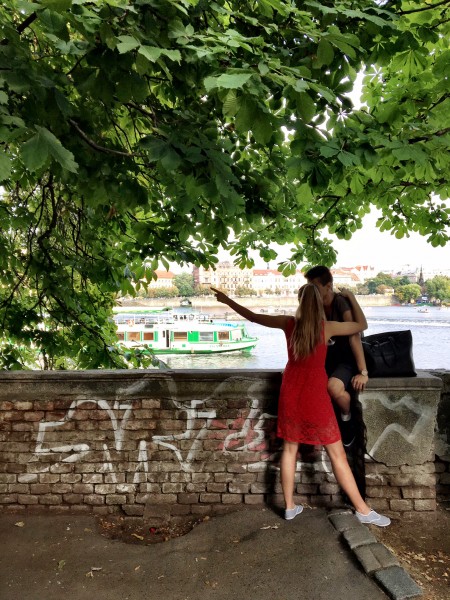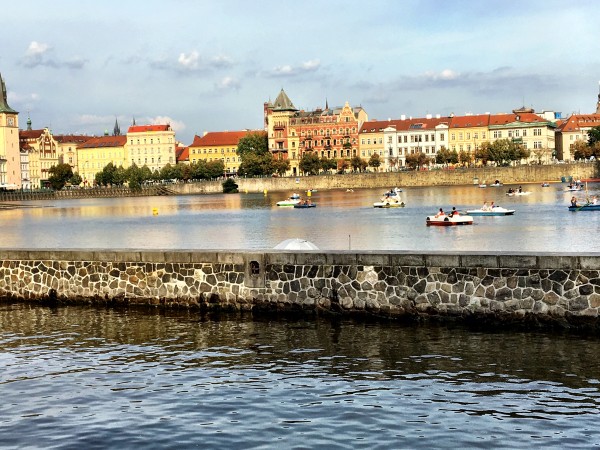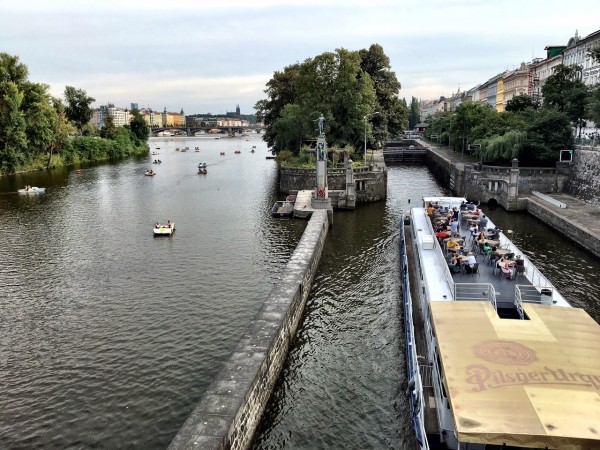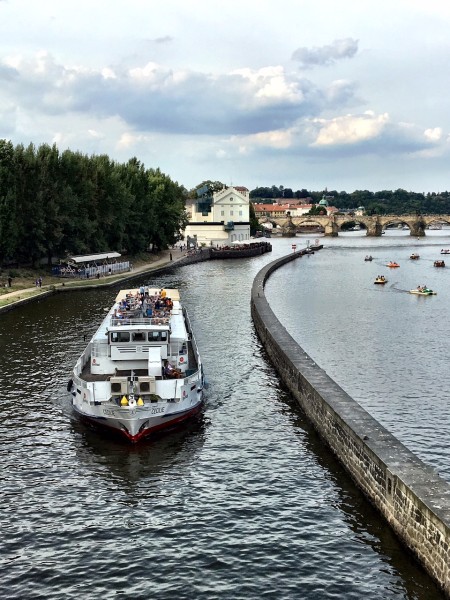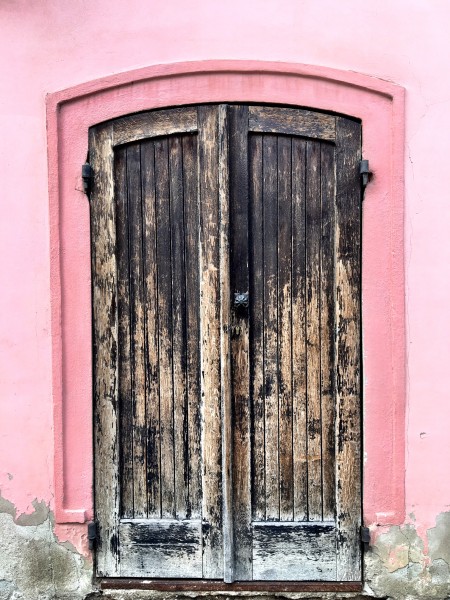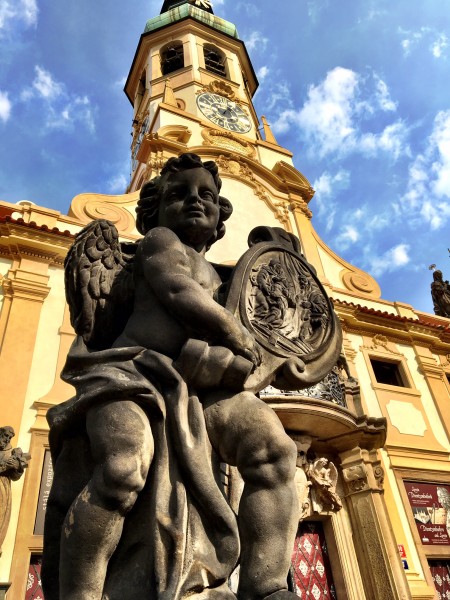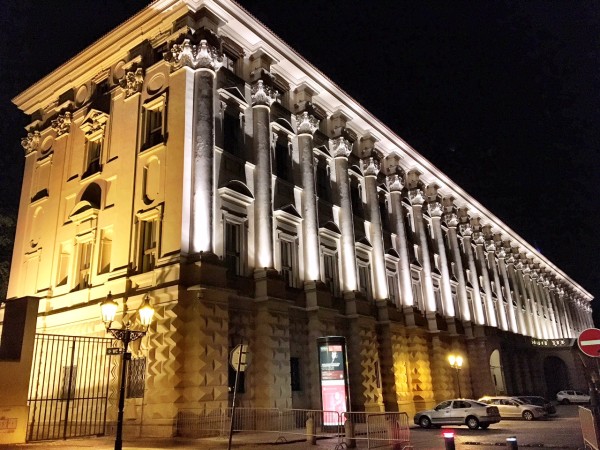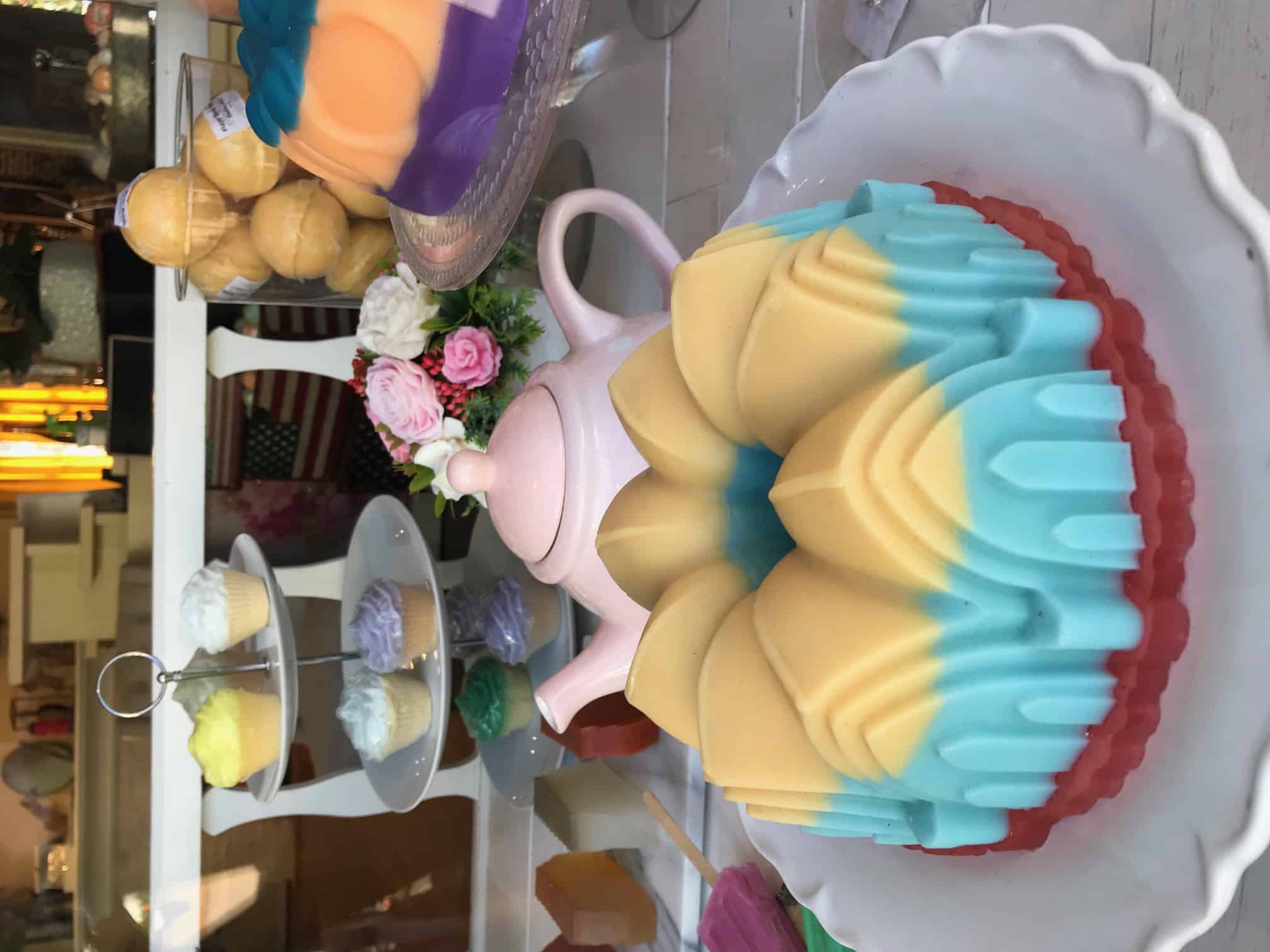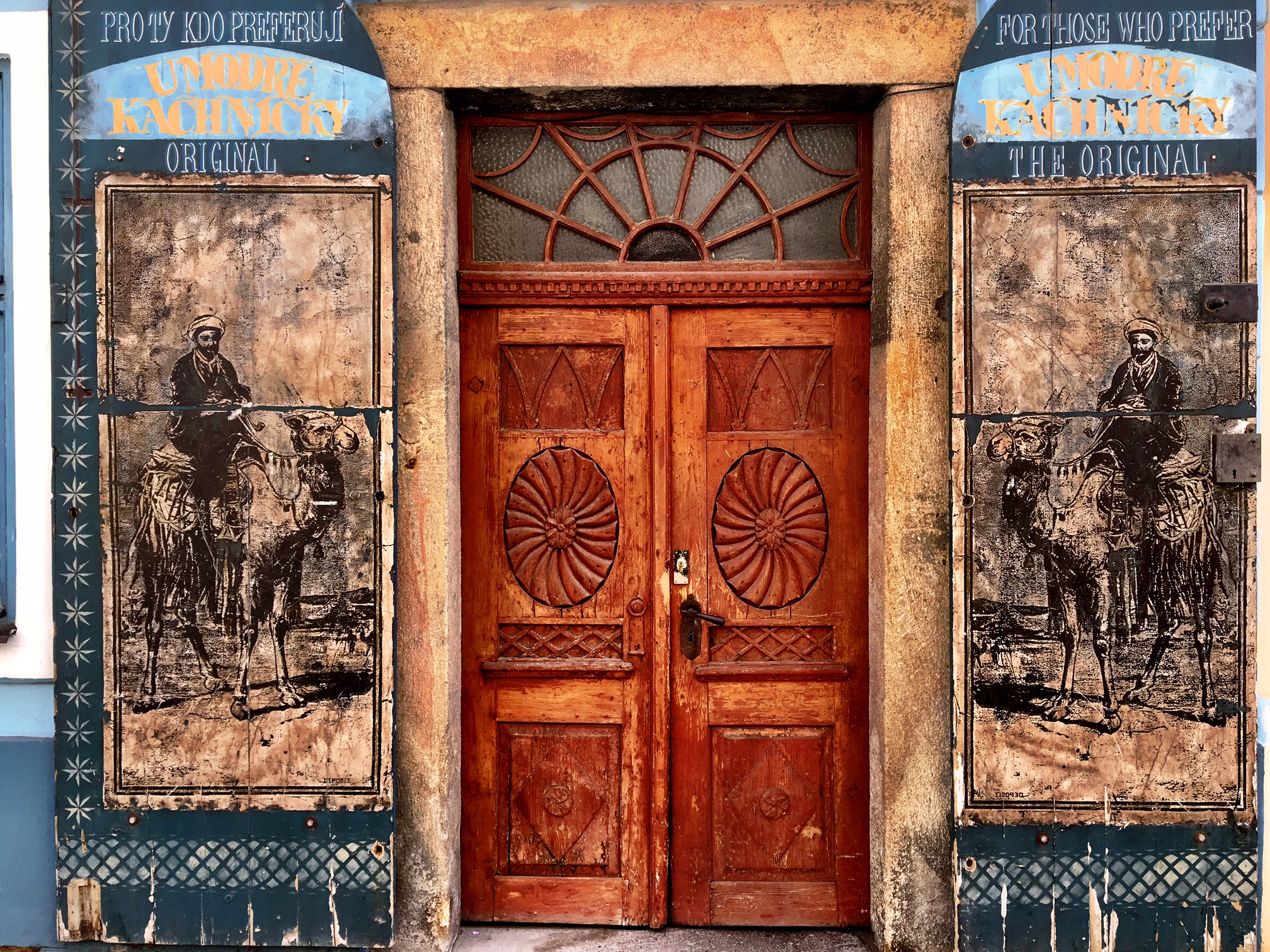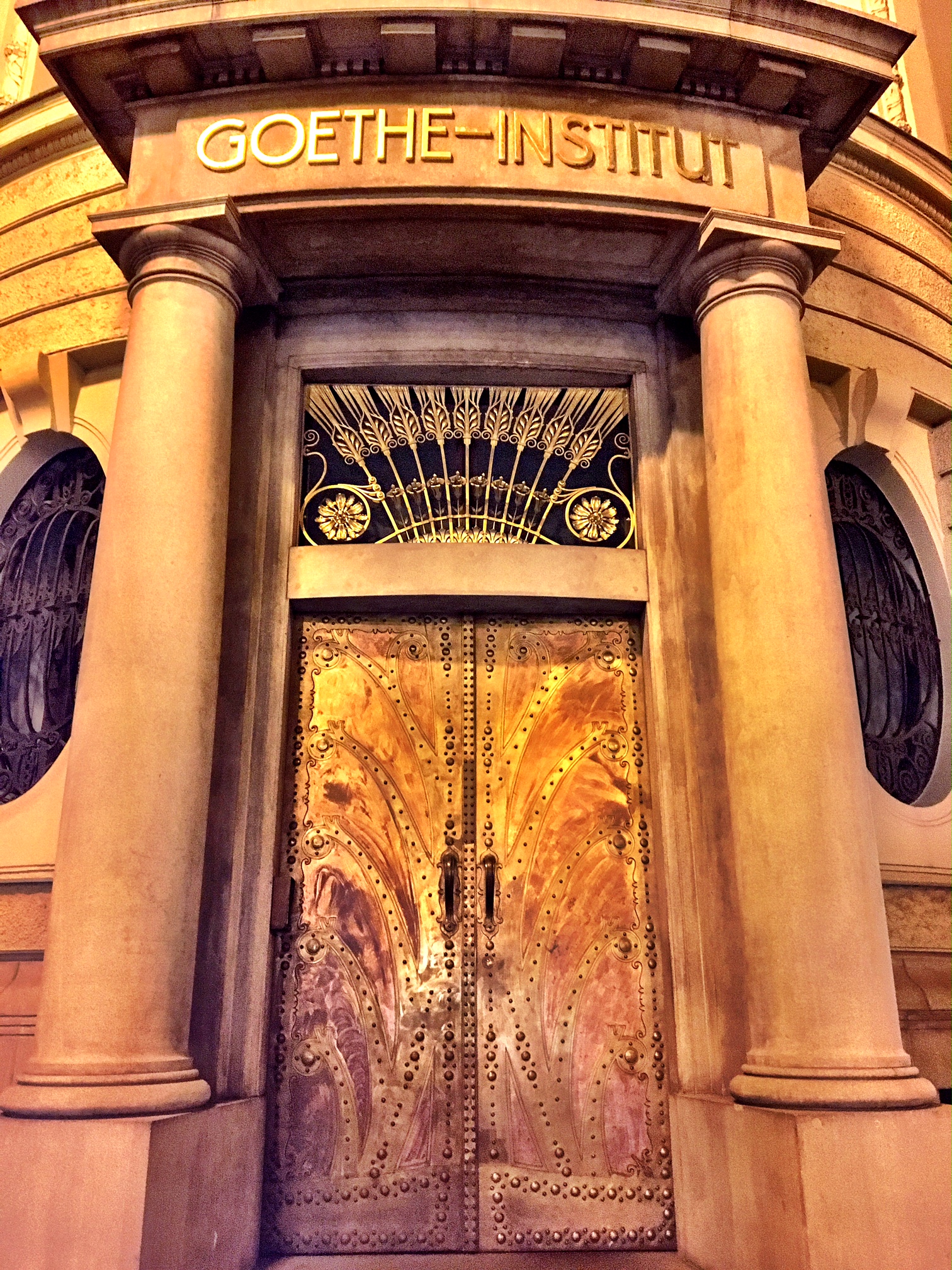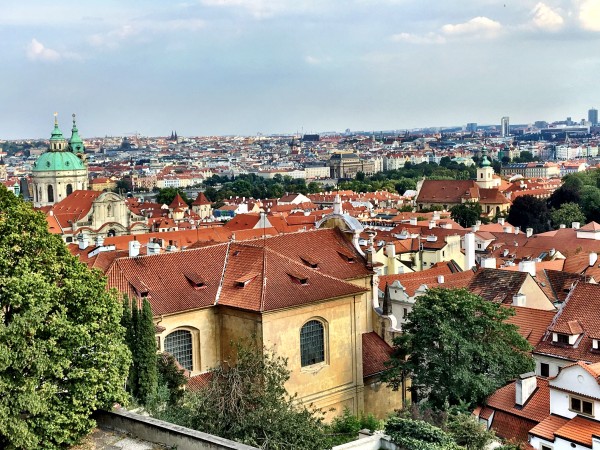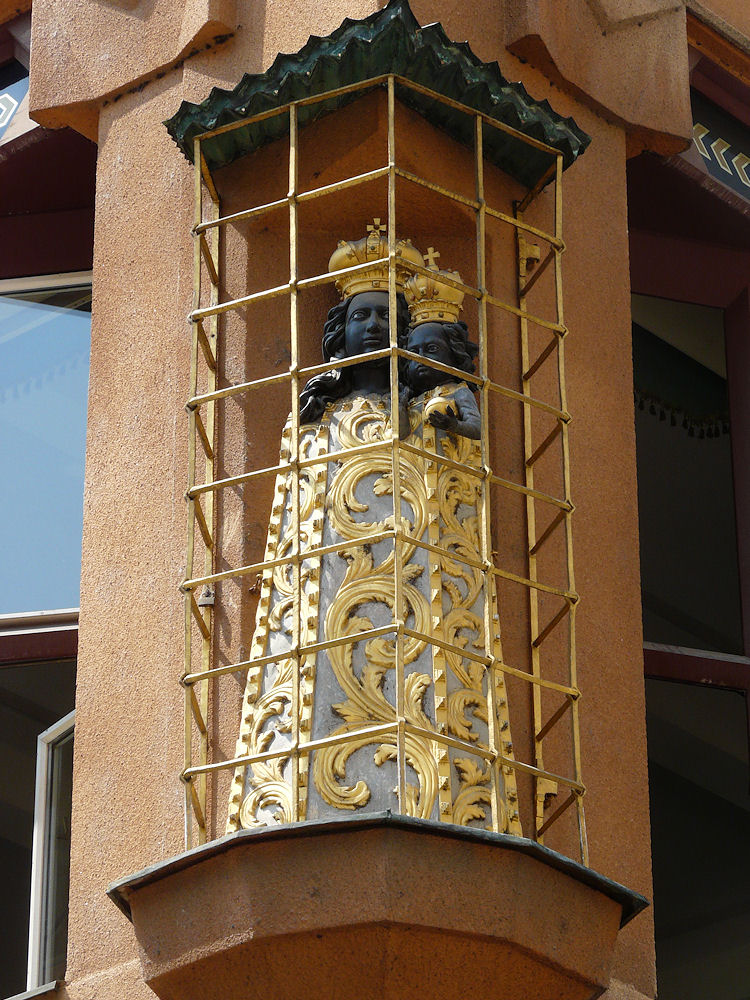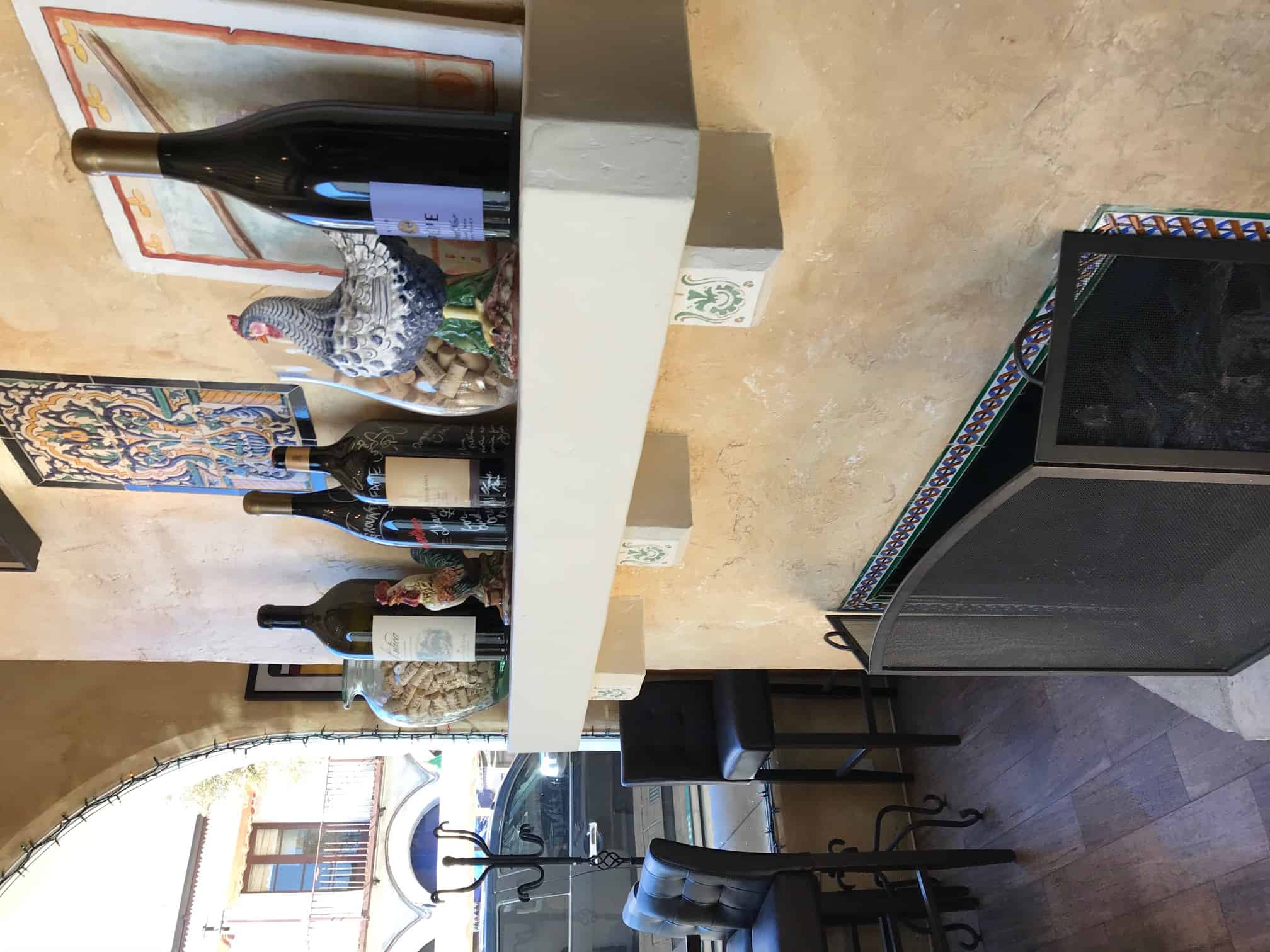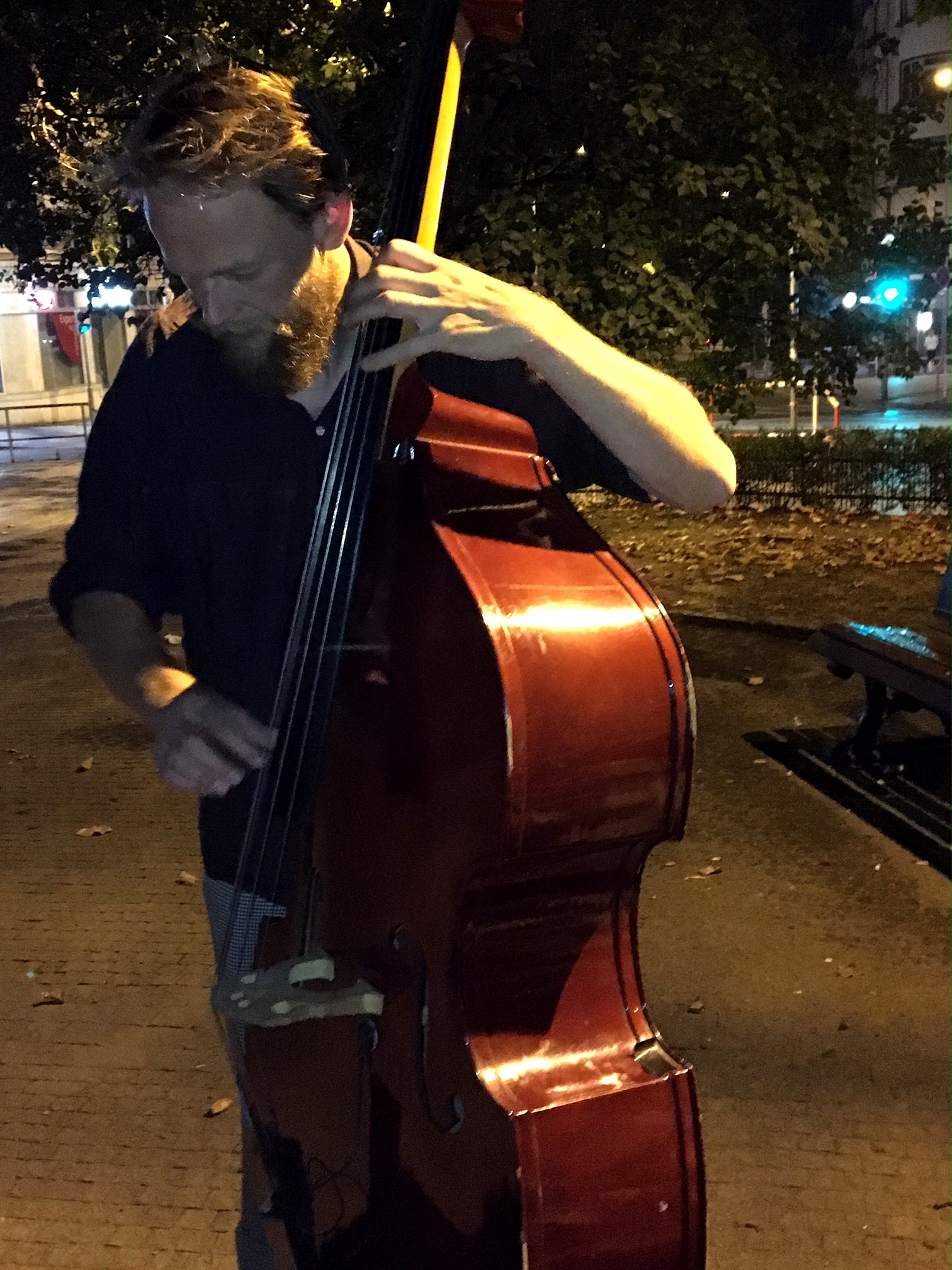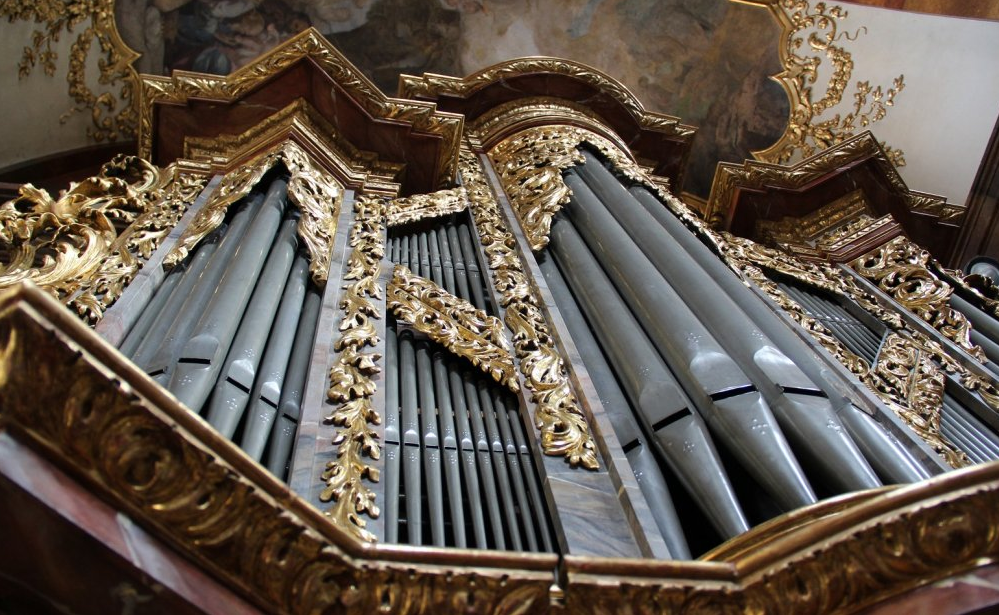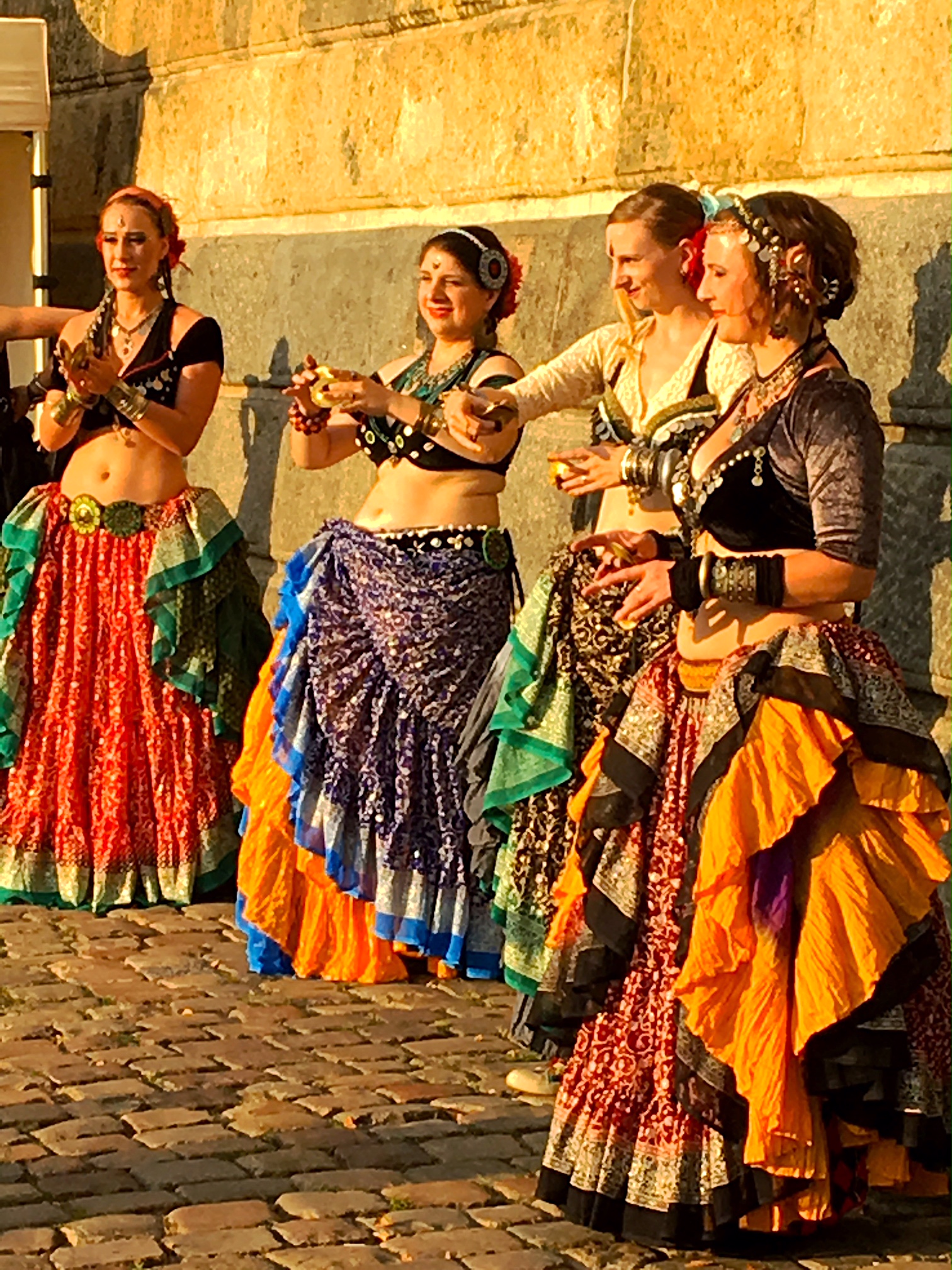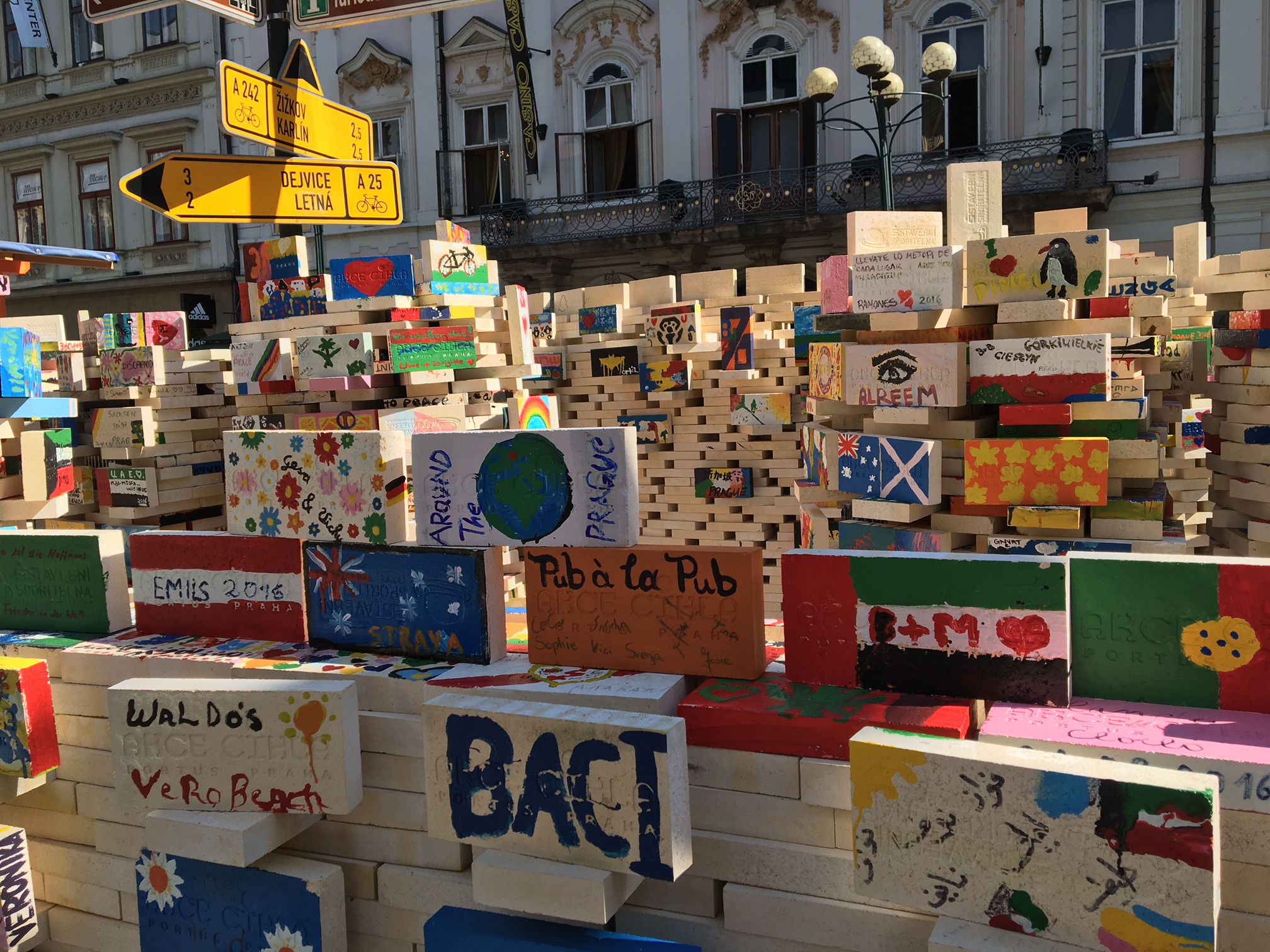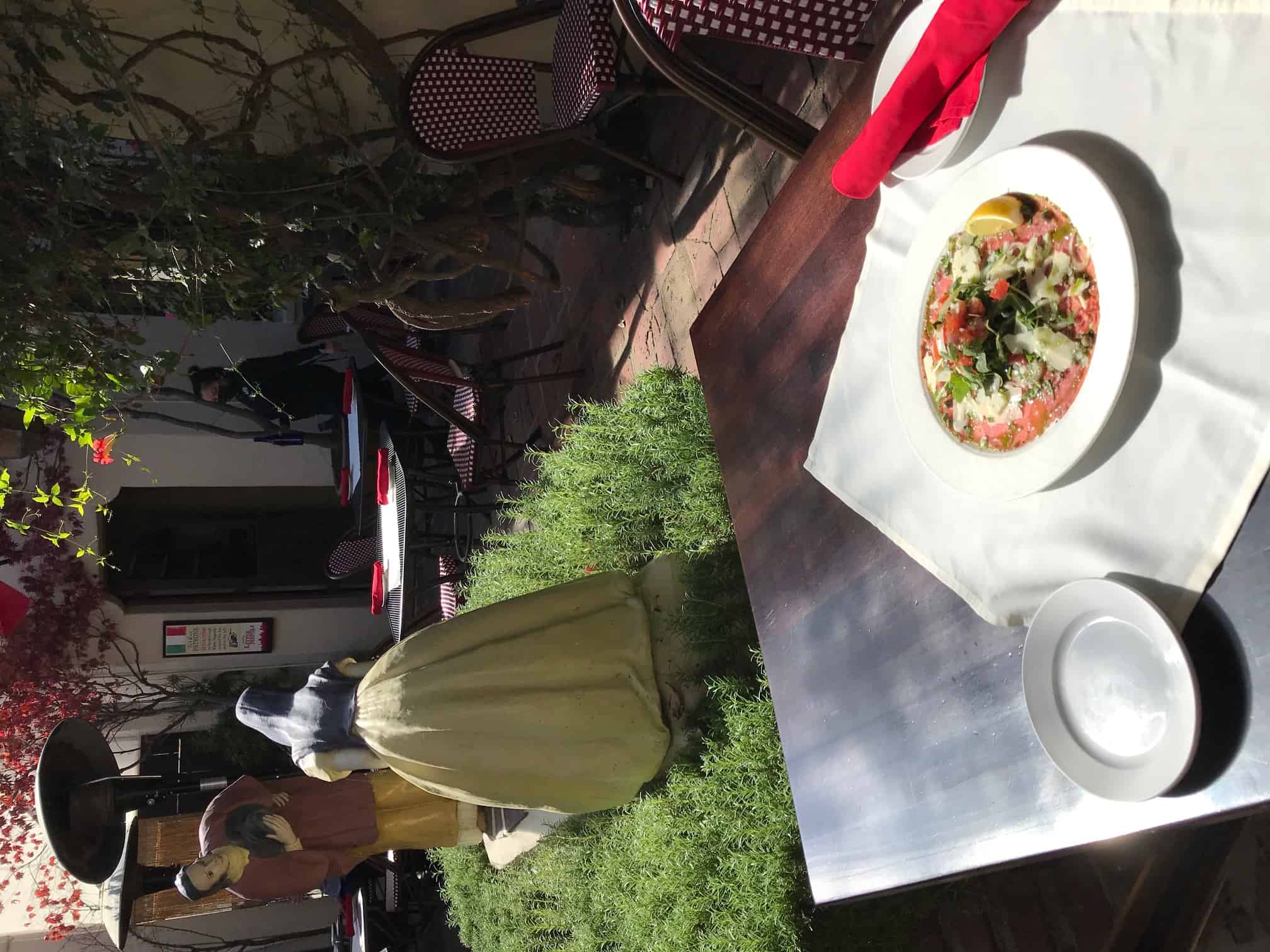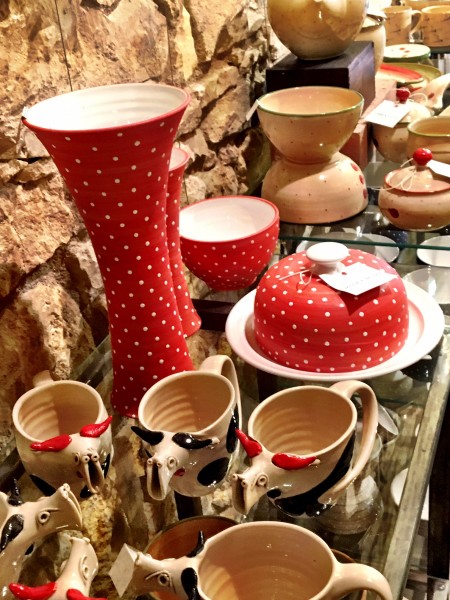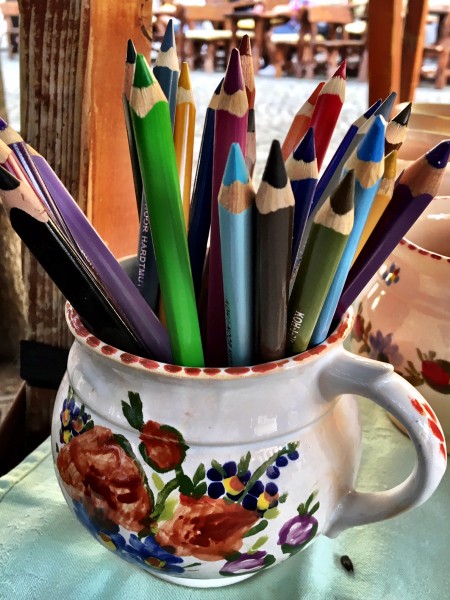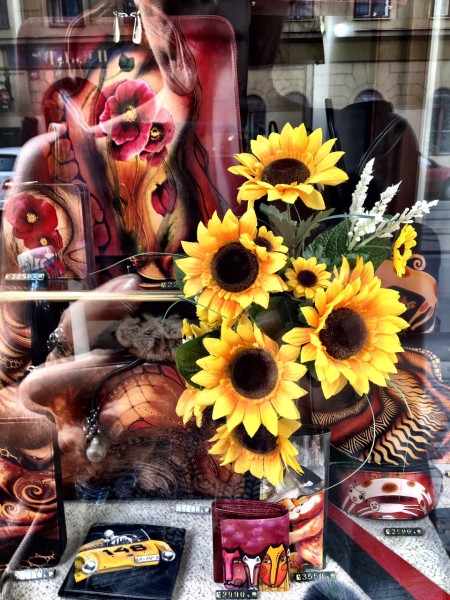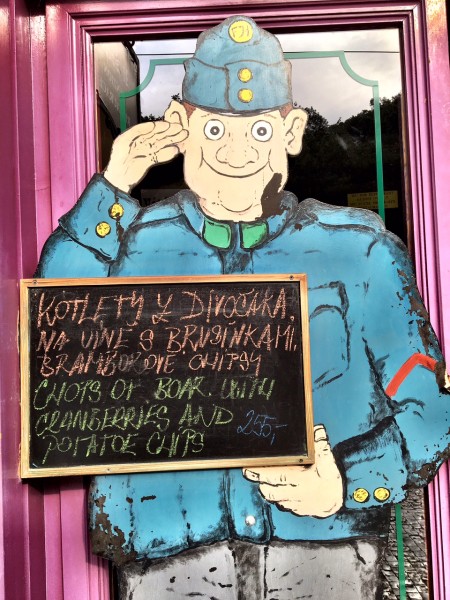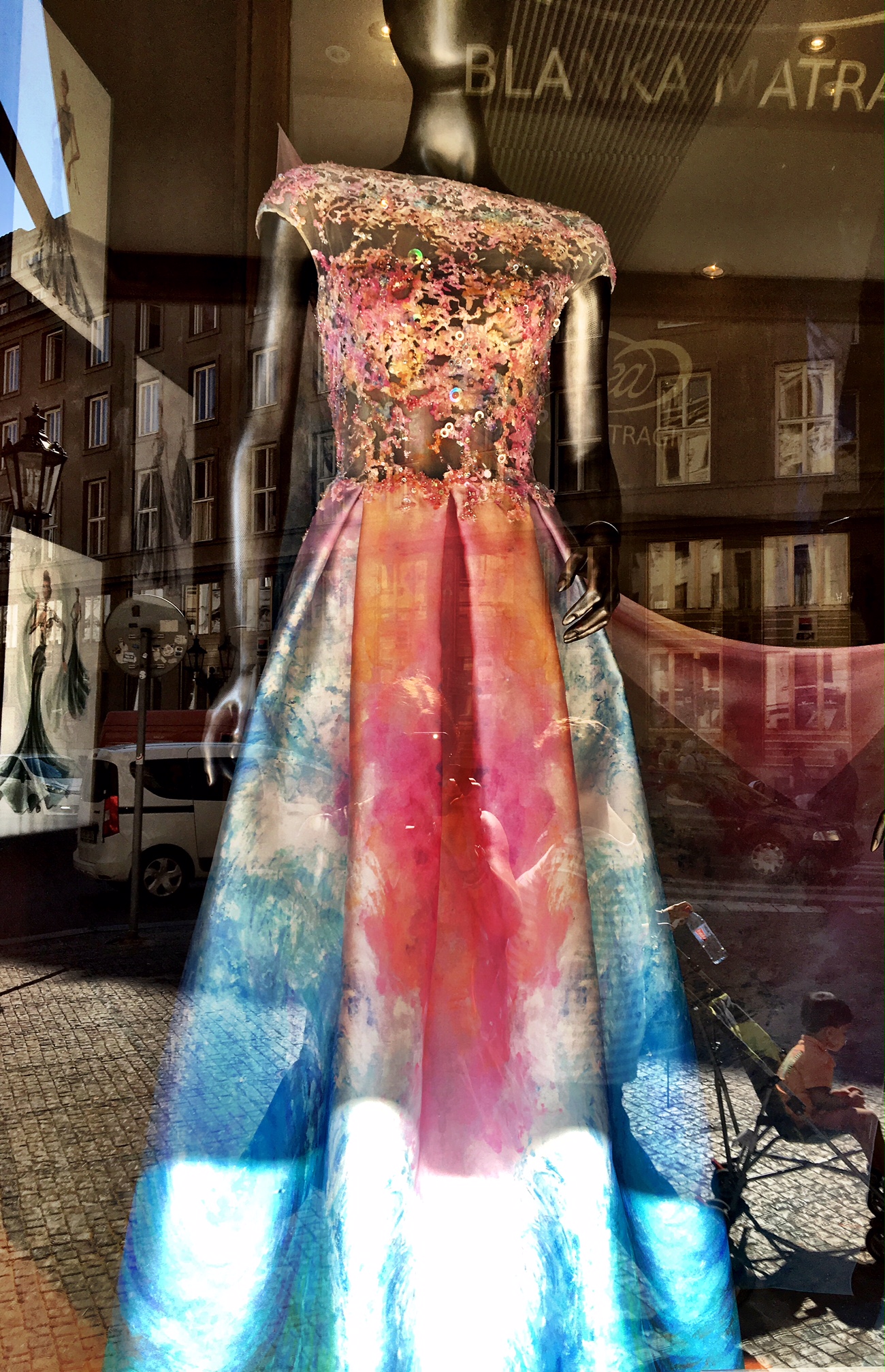Where else in Europe can you find the romantic nostalgia and aura that Paris exudes? Where architecture is awe-inspiring at every turn, shopping and dining can as equally appeal to the luxury traveler as it can the bohemian millennial and where its history, culture and creativity can keep you inspired for months, not days. Nope, not Vienna, not Rome, not London but current day Prague, and those who have been in recent years know just how far this global European city has come in the last decade. The city’s offerings for the affluent, savvy traveler who feels they’ve seen and done it all, is a far cry from her level of sophistication at the start of the last century. Prague now has three Michelin star restaurants, the Mandarin Hotel will pamper you at their upscale spa, there are countless places to get lost if you’re traveling solo, wooed by her beauty and romantic cafes if traveling with your partner and for the adventure enthusiast, you can even surf on the Charles River.
Above, five European and Canadian travel writers join me in September for a panoramic shot in one of Prague’s main squares in old town. From left to right, Thomas Keegan, Claire Marie Hewitt, Renee Blodgett, Rain Takahashi, Agneta Rickardsson, and James Murty.
The Dreamy Charles River
It’s impossible to visit Prague and not walk over the Charles Bridge unless you avoid old town altogether. It’s dreamy, always boasts incredible views regardless of where you take the river in. The Charles Bridge is full of tourists any time of day as there are musicians who have set up shop to play their latest and greatest for a few coins as well as those selling everything from jewelry and art to pottery and clocks. At night, there are picturesque views whether you stand on the bridge (or a nearby one) or take one of the barges out in the evening. There are many boat tours you can take day or night and if it’s your first time to Prague, I’d argue that it’s worth doing.
The above and below shots were taken while having dinner one night at pricy but romantic Kampa Park Restaurant.
While walking through old town…
A couple hang out at the bridge – romance is always in the air in Prague.
You can even take paddle boats out on the river if you like.
Or a much larger ferry that offer tours.
The best time of day of course is at sunset along the Charles….seeing the sun sink into the river at least four times during my stay, was most definitely a highlight!
History & Architecture
Every European city has its fair share of history, but sadly some of the architecture in many other cities were bombed during the war and buildings were completely shattered. It doesn’t mean that Prague didn’t have its share of tragedies, but given that it has been around since the late 9th century, many of its richest buildings are still around, including Prague Castle. Over many centuries, Prague was considered a multi-ethic city with a mixed Czech, German and Jewish population. Prague was once four cities: Hyadcany, Lesser Town, Old Town and New Town, which are simply neighborhoods today as the city was unified in 1784. Other districts include Josefov which is the Hebrew district and Vysehrad. Like many other cities, the Nazis occupied Prague starting in 1939 and was under communist rule for over forty years, which was the case when I first visited Prague in the 1980’s.
The historical city center is actually on the UNESCO World Cultural and Natural Heritage list and the buildings are breathtaking even if you’re a serious architecture guru. While it has 1.3 million (roughly), it doesn’t feel that big even with the flood of tourists during the summer and fall months. You’ll find that most menus are also in German, Russian and English, suggesting that their top visitors are from England, Ireland, Germany and Russia.
I spent most of my time in Hradcany (I stayed here when I first arrived) and Lesser Town, where I spent a chunk of time getting lost. Prague Castle is in Hradcany and there are some great other historical buildings in the area, including the Strahov Monastery in Strahov along Strahovské Nádvoří. It is a Premonstratensian Abbey that was founded in 1143 by Bishop Jindřich Zdík, Bishop John of Prague, and Duke Vladislav II. The monastery was built in the 12th century. Together with the Basilica of St.George at the Prague Castle (founded in 973) and Břevnov Monastery (founded in 993) it is one of the oldest monasteries in the country. This whole area is historical and incredibly pretty to walk around. There are so many hilly, cobblestone backstreets to get lost in, where you’ll discover terraced gardens, the wooded area of Petrin Hill which I wrote about in my other Prague Guide (it houses the Eiffel Tower of Prague).
Walking around Hradcany area and Lesser Town.
St. Vitus Cathedral holds the Loreto Treasure is also in Hradcany and is apparently one of the largest and most valuable Church treasure in the Bohemia. In contrast to the the Cathedral Treasury, the Loreto Treasure has works only from the the 16th to 19th centuries, which includes goldsmith art from the 17th and 18th centuries. Decadent finds include home altars, reliquaries, crowns of the “Our Lady of Loreto” Statue, carved ivory, small sculptures, paintings and jewelry.
By night, the architecture will also blow you away and the below shot was simply taken on my iPhone.
Antiquity at its best…
The Goethe-Institut!
Spotted in a window during a walking tour of Old Town
The well known curving building in Prague, which I walked by on my last visit to this romantic city as well. It’s known locally as the Dancing House (aka Tančící Dům) and it is across the street from a pretty bridge that crosses the Vltava River. Its design is unique, largely because it is a modern building surrounded by historic architecture on all sides and well because, it simply stands out. It was apparently built between 1992-1996 by architects Vlado Milunic and the the famous Frank Owen Gehry and had a different working name at the time: the “Fred and Ginger Building”, after the incredible legendary dance duo. The top floor of Dancing House also houses one of the city’s leading restaurants: the Ginger & Fred Restaurant, which I didn’t have time to visit this time around, so can’t speak to the menu or the view.
Views of buildings, other landmarks and cathedrals in the distance from Prague Castle, which also shows some of Lesser Town in the distance.
Central Prague’s architecture shows its history and attention to detail
New Town is also known as Nove Mesto and is the city’s commercial and business district, so not as interesting to walk around as the other areas. Think shopping malls, hotels, cinemas, nightclubs, and fast food joints. We did go through here to visit Wenceslas Square, which is an interesting place to visit — it used to be a horse market apparently back in the day. New Town and Old Town are separated by a “moat” aka Na Prikope Street. Some locals live out in the suburb of Vinohrady though I didn’t have a chance to really explore it this time around. Other residential neighborhoods include Smichov and Andel where you’ll find industrial architecture, bars and the Staropramen Brewery, which makes a good stop if you love beer and Prague certainly has no shortage of incredible choices. Lesser known burbs that I didn’t get to are Holesovice which is apparently very green and Karlin, which is surrounded by the Vltava River, and is considered to be a shabbier part of town. I also loved walking around the Old Jewish Quarter with its small cobblestone streets and would suggest making it part of your walking tour.
Then, there’s Old Town which has so many tourists, you’ll be lucky to meet a local. I’m half kidding of course, but during prime time travel months, you’ll need to venture off on some side streets to escape the crowds. Shopping is great here whether it’s for Bohemian glass, jewelry or clothes. But, truth be told, it IS busy. It’s so lovely and story-board like however, that even with the crowds, you half feel like you’re in the Disneyland of the Czech Republic as you walk through the streets of Old Town, also known as Stare Mesto. Old Town Square is the main central hub and a good place to grab a drink at an outdoor bar or a cafe. And, if you happen to be there at 3 pm, you can see the astronomical clock “do its thing.”
While we’re talking art, apparently the Czech Republic is the only country in the world that has Cubism as an architecture style and because of that, a discussion surrounding it really falls in both the History/Architecture and the Arts/Culture section. For historical purposes, its the years of 1911-1914 according to our walking guide. The Black Madonna Building in the heart of Prague is apparently the first of its kind. Known as a masterpiece of Czech Cubist architecture, the building, which is located between Celetná Street and Ovocný trh, was constructed from 1911–1912 by Czech architect Josef Gočár. The name comes from the Baroque statue that is located on the corner and today, it also houses the Museum of Decorative Arts Exhibition about Cubism.
Photo credit: asqimo.tumbler because for the life of me, I can’t find the shot I took with my zoom lens
The Famous Astronomical Clock
Truth be told, even though this renowned astronomical clock is in Prague’s Old Square, there’s a little ‘show’ on the hour every hour. It’s a silly thing really but also quite lovely. Hundreds of tourists gather in front of the Old Town Hall to watch a very short mechanical performance which in the Middle Ages was considered one of the wonders of the world. The Prague Astronomical Clock, which for 600 years has been one of the greatest treasures of the city, shows its procession of Apostles, moving statues and visualization of time like no other instrument in the world. And so, it is really cool and worth doing. The clock is also incredibly beautiful so if you have a zoom lens or binoculars, pull them out to get a closer look of the face. The clock has not only been showing the time and date for centuries, but also the position of the sun, phase of the moon, astronomical cycles and festivals on the Christian calendar.
Below is a short video I shot of the experience….
While you’re in the square, be sure to pay homage to the massive twin towers of the Týn Cathedral, wwhich is a bit fairytale like, not unlike so many other historical gems in Prague’s Old Town. The cathedral boasts the highest altar in Prague and also has the tomb of the famous astronomer Tycho Brahe. There’s so much Baroque architecture in the Old Town area, including the Church of St. Nicholas where they still hold concerts today. Another thing worth noting is that the National Gallery in Kinský Palace is nearby.
Breathtaking City Views
There are so many spots in Prague to get breathtaking views — my advice is to walk around, avoid trams and avoid Uber or taxis, at least for your first 48 hours. It’s really the best way to learn the city and to ‘fall upon’ discoveries you likely won’t get if you try to short cut it with a vehicle. I’ll let the photos do the talking here. In Old Town Square, you can go the top of the tower and catch panoramic views of the city below — the below shots were taken on my iPhone.
There’s a stairway and elevator that goes to the top of viewpoint area (included in most tours) that will give you the above spectacular views. There’s a small fee to get to the top and they sell clocks on pendants and old fashioned ones for the side of your bed in the main lobby area.
Also on the ground floor if you stay for awhile and look around, you’ll see some remarkable work on the ceiling – don’t forget to look up in Prague and look up often!!
Shopping, Culture, Music & Art
Also in Old Town is Lennon Wall or John Lennon Wall, which was once a normal wall, it has been filled with John Lennon-inspired graffiti and pieces of lyrics from Beatles’ songs since the 1980’s. One of the two times I passed by, there was a young couple singing John Lennon songs and of course, artists and dreamers, myself included, getting the “must take” photo in front of the wall before leaving Prague.
Yup, I had to do it!
Along the river, I fell upon a group of women dancers who gave a several song belly dance performance for us one afternoon – it was oh so lovely!
The very artsy Ametyst Hotel in Prague, where I stayed at the end of my trip (easily accessible by tram although it is about a ten minute walk to the closest one)
Art lovers will appreciate the Mucha Museum, which is the world´s first museum dedicated to the life and work of the world-acclaimed Czech ART NOUVEAU artist Alphonse Mucha (1860-1939). The museum is located in the Baroque Kaunický Palace in the center of Prague. They have a selection of over 100 exhibits comprising paintings, photographs, charcoal drawings, pastels, lithographs and personal memorabilia as well as posters he executed for Sarah Bernhardt in the fashionable world of fin-de-siècle Paris. I only discovered it existed from my colleague Kate who’s apparently an art nouveau fan and it was sadly on my last day in Prague, so I didn’t have a chance to visit it. In hindsight, I wish I elevated it on the priority list. I absolutely love his work and later, remembered studying him in college and later when I lived in Amsterdam with a Dutch artist. The address is: Panská 7, 110 00 Prague 1.
Photo credit: www.Prague-me.cz.
I met a cello player on a train and he offered to play for me in the park, at midnight. Yes, really! It was a precious treat and a raw Prague moment.
Here’s a short snippet of him playing and albeit dark, you’ll get an idea of the sentiment and magic late night moment.
Speaking of incredible classical music, there’s Organ Concerts Daily at St. Francis Church near the Charles Bridge. Ave Maria was playing when I was there. The organ in St. Francis Church was built in 1702 by Master Abraham Stark from Elgbogen in Western Bohemia. This rare organ is apparently the second oldest in Prague and has been played by Mozart and Dvorak. St. Francis Church is built in baroque style like so many other buildings in Prague and has a long music tradition. At concerts here, you can hear some of the best Prague organists and professional Czech instrumental and vocal soloists. Apparently they don’t just see their concerts as sacred music performances, but a “complex experience of Baroque Prague musical heritage.” They are now in their 24th Concert Season. Bravo!
Photo credit: PragueClassicConcerts.com.
Performers are everywhere in fact — it’s not hard to find great music (and for free) right on Prague’s streets, or along the river (below).
Below is a short video I shot of young students playing on the street; she is singing in English, not Czech…
Another singer and pianist plays at a local market that takes place in Old Town every weekend — I bought some homemade pottery here and recommend stopping by despite it being packed with tourists. It’s lively and….fun!!
Then, there are quirky things you can do ON the Charles River, like run like a hamster in a bubble. I didn’t quite ‘get it’ but it was amusing to watch others sign up to try it out!
How about this creative and important initiative that helps humanity? I fell across a table for Beneficial Brick in the heart of New Town. Buying a brick supports people with special needs to help them on their journey and financial aid (they’re in their 17th year of fundraising), allows them to operate in more than 26 facilities. Apparently, this year’s funds will go towards constructing a social therapeutic workshop and for building a roof on sheltered housing in the Slapy Village which is not far from Prague. More details at beneficialbrick.org.
Taken along the banks of the river in September…
Art and great architecture combined also on the river….
There’s no shortage of great shopping throughout the city, from porcelain, Bohemian glass, pottery, woodwork and jewelry to art work, clothing, shoes and craft work.
A puppet show in old town has a captive audience of Czech children on a Saturday afternoon
Artists in markets show off their latest and greatest and a creative atmosphere is abound regardless of where you go in the city today…
Window shopping is also wonderful, day or night and there are high level fashion designers who have taken over some upscale stores; Prague has moved well beyond the artsy, folksy and quirky…
Let’s face it, quirky creativity is abound as well, from representing Czech culture outside a cafe to artisans on the Charles Bridge who sell everything from earrings, necklaces and drawings to bowls and clocks.
Fashion & Style
I love the high end fashion here as well as some of their lovely luxury shops, for glass, jewelry and shoes. Have a peak and you’ll see why Prague is on the international culture, fashion and arts scene in Europe today.
Other Useful Articles:
- A Comprehensive Guide to Getting Lost in Prague – this guide largely covers the other side of town, across the Charles Bridge and the Lesser Town district
- Lindner Hotel Prague Castle Sits on Same Site as 12th Century Monastery
- The Ultimate Foodie Guide to Prague’s Culinary Delights
- Valoria Restaurant Review
- Prague’s Kampa Park for that Romantic Night Out
- Re-Awaken Your Palette at Prague’s Michelin Star La Degustation
- Piano Nobile, When You Want Exquisite Food in a Czech Countryside Chateau (an hour outside Prague)
- Your Guide to Prague, From History & Architecture to Arts & Culture
- Hotel Imperial Spa & Health Club in the Heart of Karlovy Vary’s Hot Springs (a side trip from Prague)
- Medical & Wellness Spa Programs at Karlovy Vary’s Imperial (a medical spa and a side trip from Prague)
- Why Dreamy Loket & its 13th Century Castle Attracts Film Makers & Celebs (a village and side trip from Prague)
- Head to Karlovy Vary for its Healing Thermal Springs & Storyland-Like Walks (a side trip from Prague)
- Discover Heavenly Spa Town Marianske Lazne in the Heart of Bohemia (a side trip from Prague)
- Get Upscale Pampering at Prague’s Mandarin Hotel (luxury spa)
- Pure Radiance and More at the Four Seasons in Prague (luxury spa)
- Behind the Scenes at the Moser Glassworks Factory in Bohemia (a side trip from Prague)

Renee Blodgett is the founder of We Blog the World. The site combines the magic of an online culture and travel magazine with a global blog network and has contributors from every continent in the world. Having lived in 10 countries and explored nearly 80, she is an avid traveler, and a lover, observer and participant in cultural diversity.
She is also the CEO and founder of Magic Sauce Media, a new media services consultancy focused on viral marketing, social media, branding, events and PR. For over 20 years, she has helped companies from 12 countries get traction in the market. Known for her global and organic approach to product and corporate launches, Renee practices what she pitches and as an active user of social media, she helps clients navigate digital waters from around the world. Renee has been blogging for over 16 years and regularly writes on her personal blog Down the Avenue, Huffington Post, BlogHer, We Blog the World and other sites. She was ranked #12 Social Media Influencer by Forbes Magazine and is listed as a new media influencer and game changer on various sites and books on the new media revolution. In 2013, she was listed as the 6th most influential woman in social media by Forbes Magazine on a Top 20 List.
Her passion for art, storytelling and photography led to the launch of Magic Sauce Photography, which is a visual extension of her writing, the result of which has led to producing six photo books: Galapagos Islands, London, South Africa, Rome, Urbanization and Ecuador.
Renee is also the co-founder of Traveling Geeks, an initiative that brings entrepreneurs, thought leaders, bloggers, creators, curators and influencers to other countries to share and learn from peers, governments, corporations, and the general public in order to educate, share, evaluate, and promote innovative technologies.


